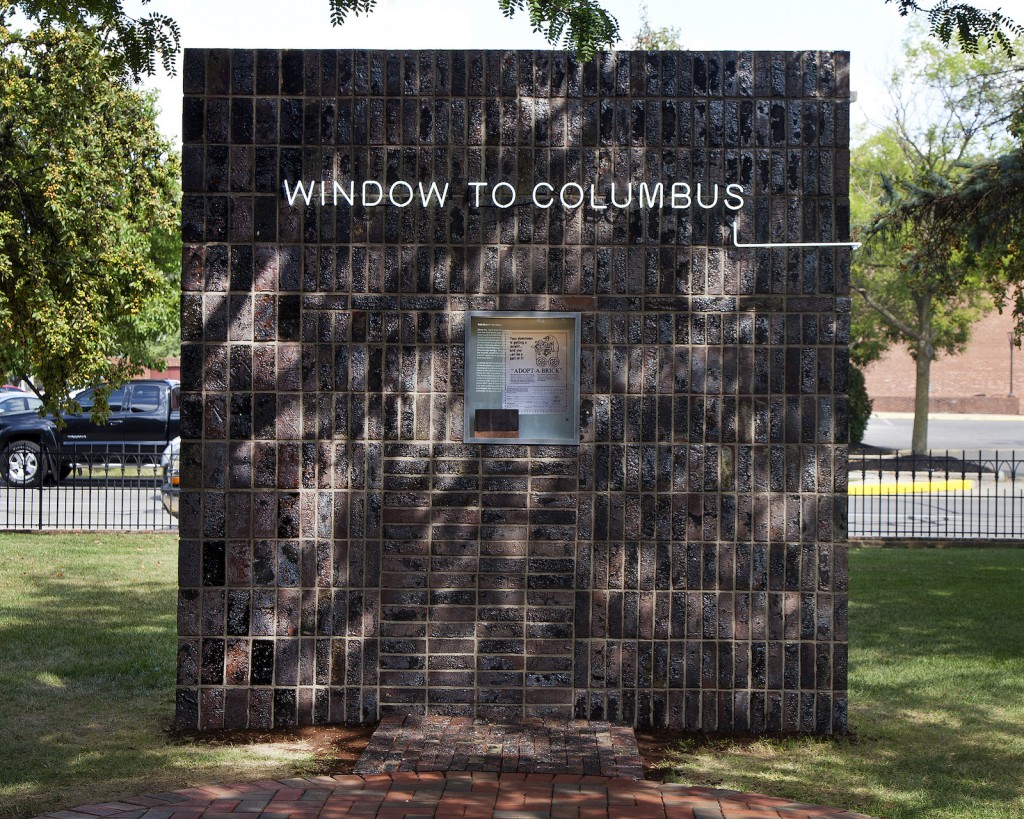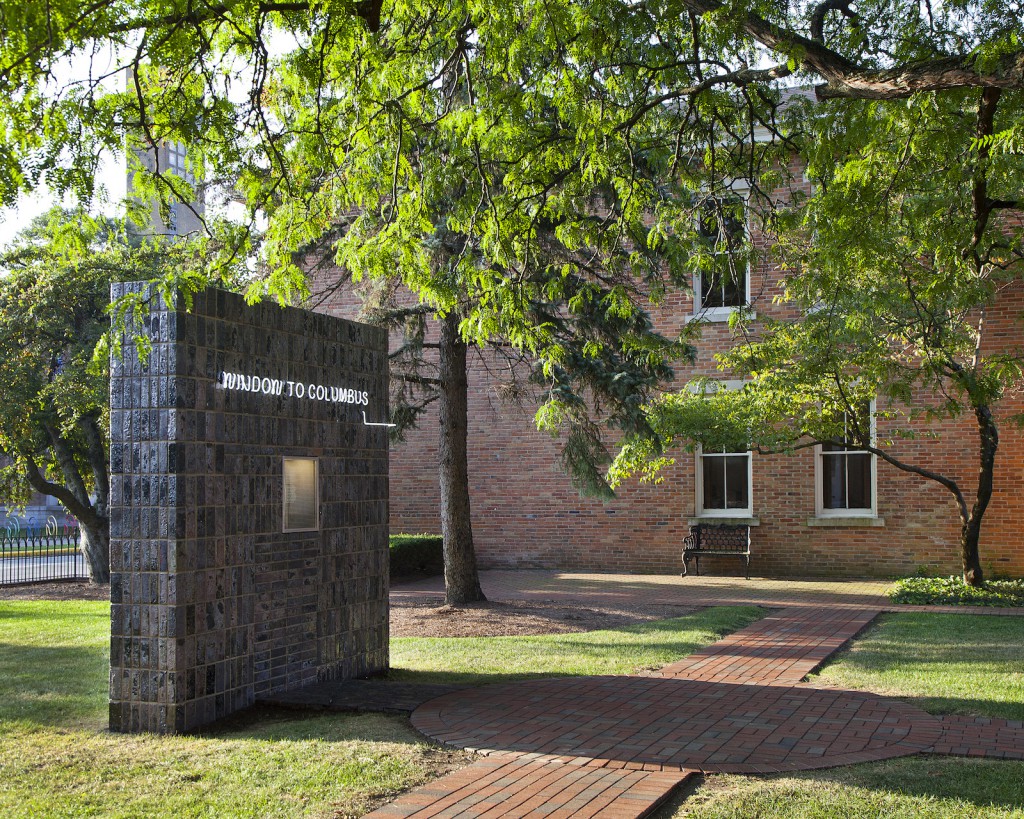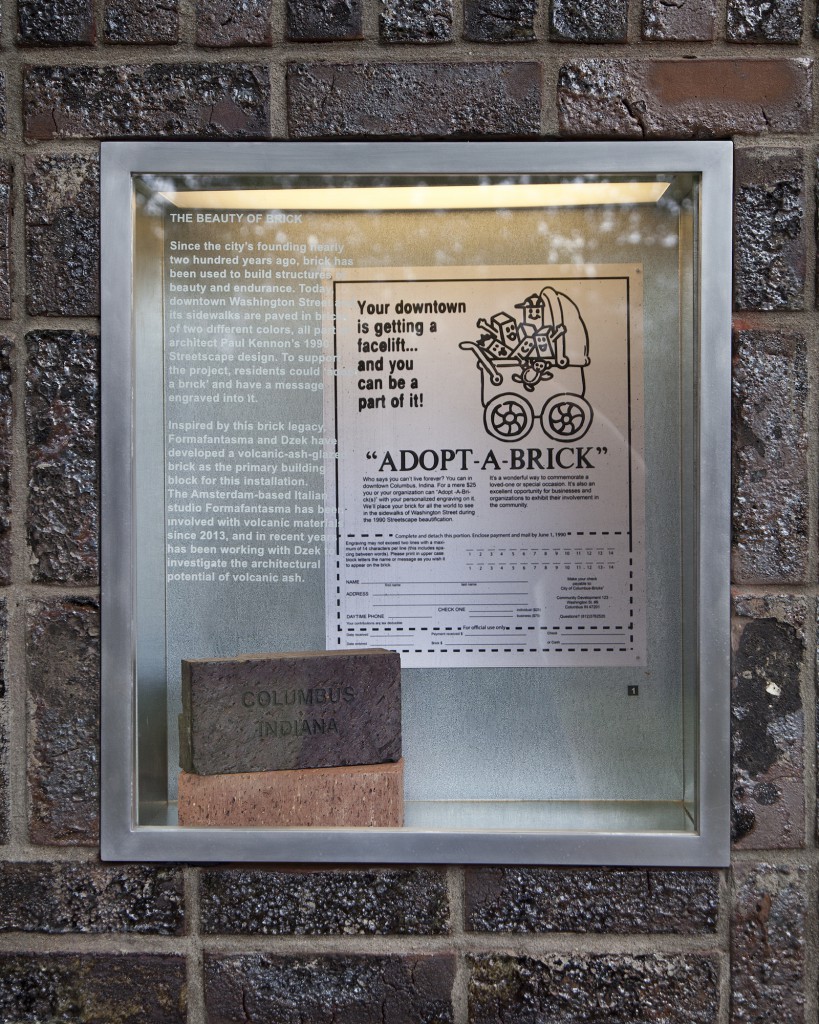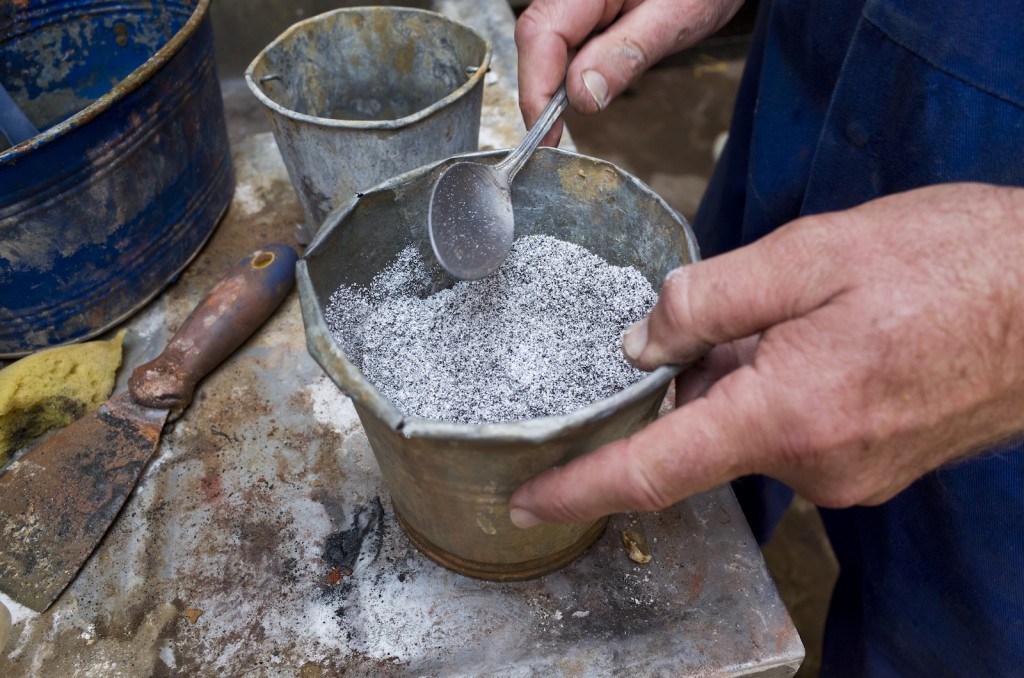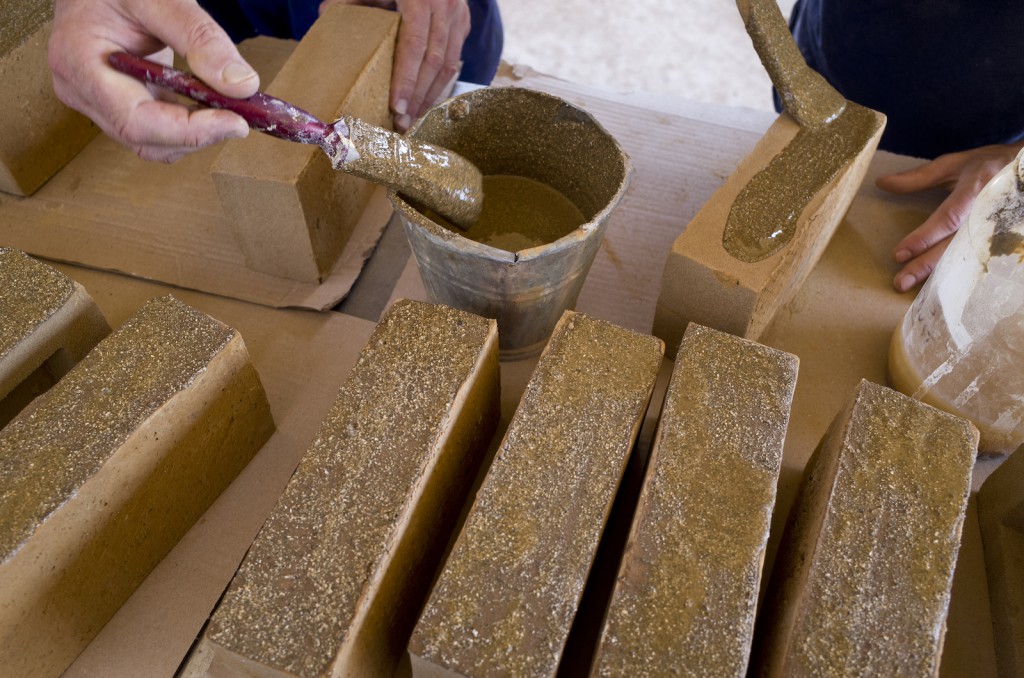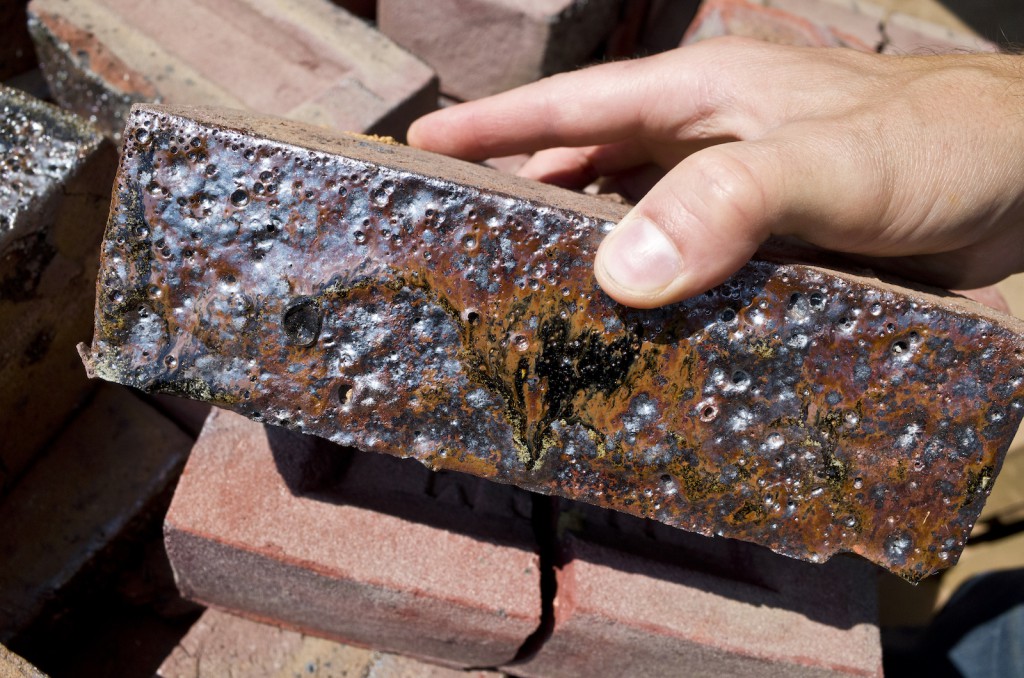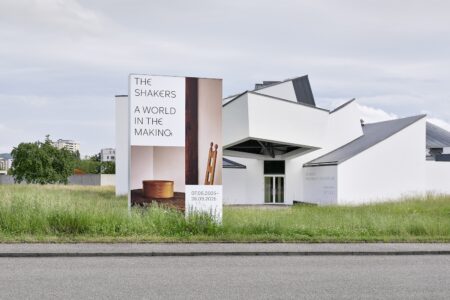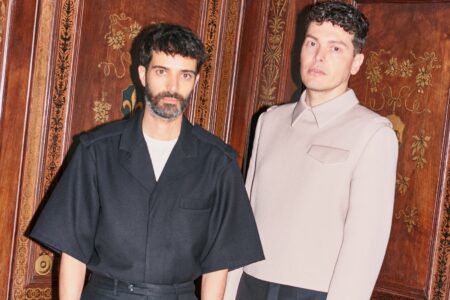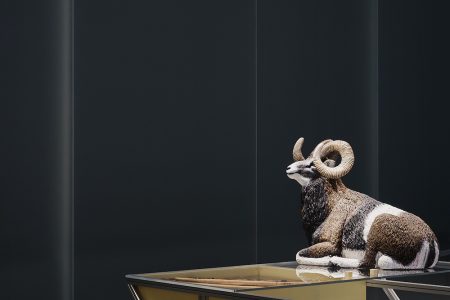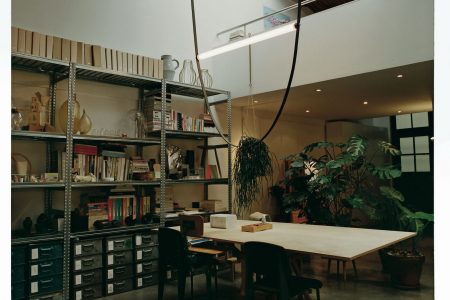Formafantasma and Dzek Look at Columbus
For Exhibit Columbus, the Italian duo and London-based manufacturer Dzek worked together to honour the city’s brick architecture heritage with the help of Mount Etna
The intense activity of Mount Etna, Italy’s largest active volcano, has kept Sicilians on their toes for ages —and in the last decade has had an eruption with increasing frequency, at a rate of nearly once per year. And yet locals have a love-hate relationship with this force of nature: the same mineral-rich lava that threatens them also keeps the soil full of nutrients, which accounts for the region’s agricultural prowess.
That same environment produced the volcanic ash that Italian duo Formafantasma and London-based manufacturer Dzek used to glaze the bricks used in Window to Columbus, an exhibition in the Indiana city of the same name.
Andrea Trimarchi and Simone Farresin, the designers behind Formafantasma, have been studying the design applications of volcanic materials since 2009 —the 2014 project De Natura Fossilium, for example, saw them turning materials from the Mount Etna landscape into a collection of textile, basalt and glass objects.
For their Exhibit Columbus participation, the studio decided to honour the city’s architectural affair with brick, seen in landmark local buildings like Robert Venturi’s Fire Station 4 and Eliel Saarinen’s First Christian Church. After several experiments in Turkey and Italy, where they dealt with the unruly and unstable chemical profile of volcanic ash to develop bricks using glass moulding techniques, they ran into a viable solution in England. “Could we create a thin volcanic surface on top of a different, sturdier material?” they asked, working with Dzek. “The terra-cotta brick emerged as a potential quality host for the volcanic ash surface.” The trials lead to the dozens of glazed bricks that now form the wall of the Window to Columbus set.
The name is a reference to the inset window that reveals a series of six rotating exhibitions, which change fortnightly. The selection, co-curated by the Italians and Tricia Gilson of the Columbus Indiana Architectural Archives, tells the stories of the materials that have helped shape Washington Street, the city’s main road and the location of the Exhibit Columbus outdoor installations. On display is a series of building postcards from the Bartholomew County Historical Society. There’s also a nod to the brick adoption program that partly funded architect Paul Kennon’s 1990 Streetscape design —that’s the origin of the two-coloured bricks that pave downtown Washington Street and its sidewalks.
This is the first public display of Dzek’s volcanic-ash production. The English company, founded in 2013 by Brent Dzekciorious, has been questioning the potential of industrial manufacturing by championing the creation of “products with artistic significance” —their earlier commercial project, Marmoreal, a wildly photogenic aggregate terrazzo made of 95 percent marble and five percent polyester resin binders.
The signature brownish-red look of Columbus reveals the influence of a certain Italian word. Thanks to a Sicilian-Venetian duo and a visionary London manufacturer,“terracotta” can now be joined by “mongibello.”
Exhibit Columbus is open until November 26
